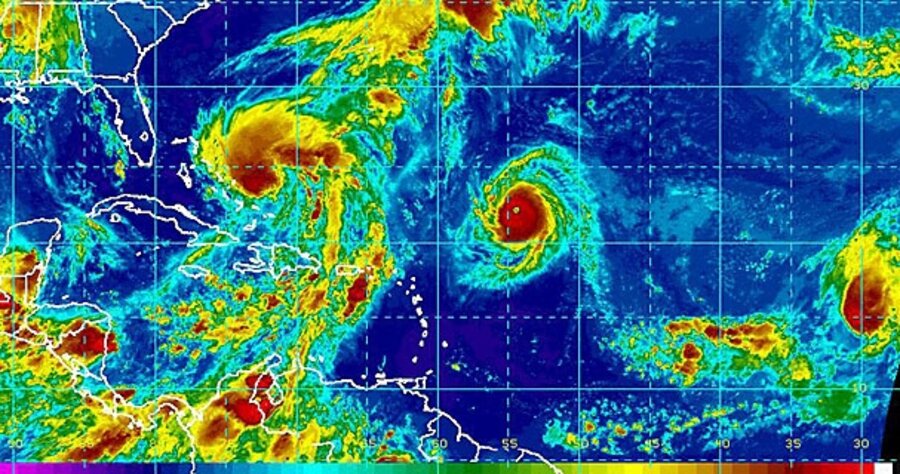What's with all the hurricanes?
Loading...
Look at a satellite map, and you'll see them lined up like Rockettes, stretching from Texas to the Canary Islands: Former Hurricane Gustav, Tropical Storm Hanna, Hurricane Ike, Tropical Storm Josephine. What gives?
Four simultaneous named storms is unusual, but it's not unprecedented. As the AP's Seth Borenstein points out, 1998 saw four hurricanes – not just tropical storms – at the same time. And in 1995 we had five coinciding tropical storms.
Still, it's not every year that we see a procession like this. Borenstein explains how a number of circumstances have combined to create ideal conditions for tropical storm formation. First is a relative absence of wind shear in the North Atlantic, which can weaken storms or prevent them from developing. Then there are the winds bracketing the hurricane-formation regions, blowing from the west in the deep tropics and from the east in the subtropics, making it more likely for spinning storm systems to develop. And then there's the slightly-warmer-than-average water, which fuels storms.
And finally, there's the low atmospheric pressure caused by all the other tropical storms. Hurricanes, it seems, can sometimes beget more hurricanes.
Beginning in 1995, there has been a big upswing in the number of Atlantic tropical storms. According to the Pew Center on Global Climate Change, the years 1850 to 1990 saw an average of about 10 tropical storms, including about 5 hurricanes. Since 1995, the average has spiked, with the 1997-2006 average at about 14 tropical storms, including about 8 hurricanes. This increase correlates with the rise in ocean temperatures, which in turn is linked to global warming.
So can we say that global warming is already influencing hurricanes? Not so fast. This is a matter of honest-to-goodness debate among climate scientists (as opposed to a certain other debate that is largely manufactured). A document posted on the World Meteorological Organization's website and signed by the world's top tropical cyclone experts agrees that there is evidence both for and against a human fingerprint on hurricane activity, and that models predict a 3 percent to 5 percent increase in windspeed per degree Celsius increase of ocean surface temperatures.
What's more, some scientists say they see evidence that ocean temperature goes through natural variations, such as the hypothesized Atlantic Multidecadal Oscillation, a roughly one-degree-Fahrenheit swing in ocean temperatures said to last about 20 to 40 years. According to this theory, since the mid-1990s, we've been in a warm phase. This oscillation has been going on for at least the past millennium, and could very well be a cause of the recent spate of Atlantic hurricane activity, but this has by no means been proven.
Also, remember that Atlantic storms account for only about a tenth of all tropical storms. The rest, called cyclones and typhoons, are in the Indian and Pacific Oceans, and their numbers have held steady.
Still, many scientists have observed that hurricanes have gotten more intense in recent decades, and the UN's Intergovernmental Panel on Climate Change found that it is “more likely than not” that this observed increase is partly due to human activity. What's more the panel said that it is likely (that is, better than 2 to 1 odds) that future storms will be stronger due to global warming.
And, as I wrote in my previous post, a paper published in this week's edition of the journal Nature observed that the strongest storms over the past 26 years have become stronger due to increased ocean temperatures.
But none of this is definitive. The data set of measurements of hurricanes is far from perfect, and the mechanisms of the relationship between ocean surface temperatures and storm intensity is poorly understood. What's more, one study by the NOAA published this year found that global warming could actually decrease the severity of storms, by creating wind shear that lops off the top of the storms.
So until a consensus emerges, those advocating action on climate change will have to content themselves with the prospect of mass extinctions, rising sea levels, withered crops, drought, and water shortages. As for whether the storms currently marching toward our coasts have been influenced by our SUVs, the jury is still out.





